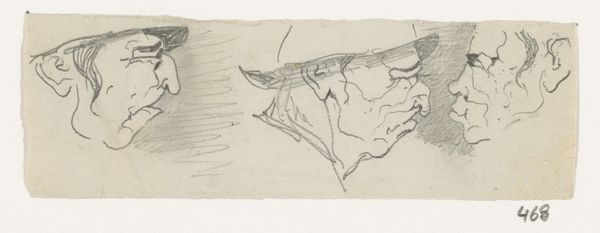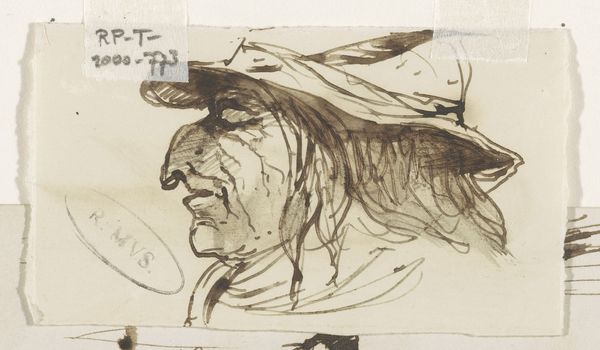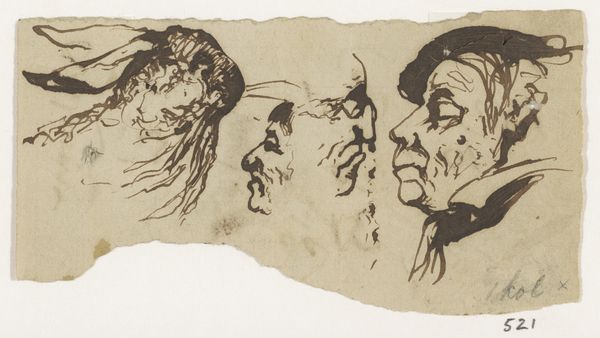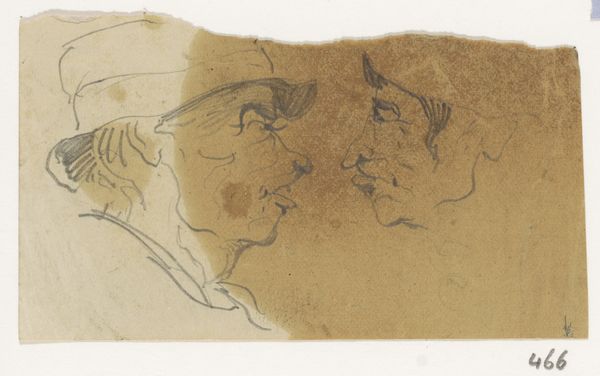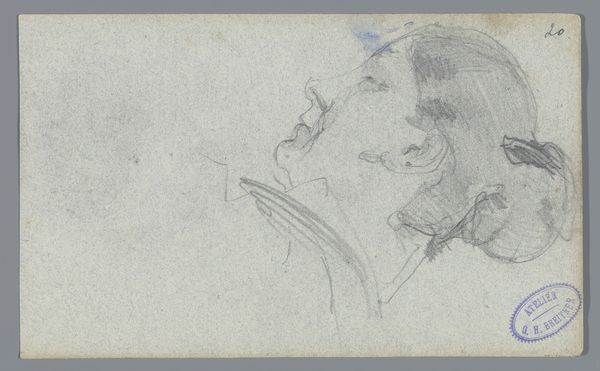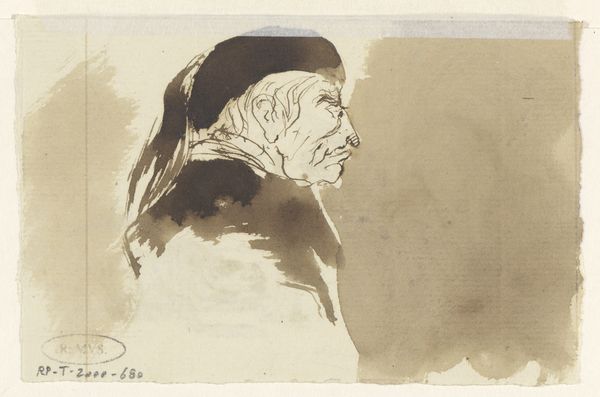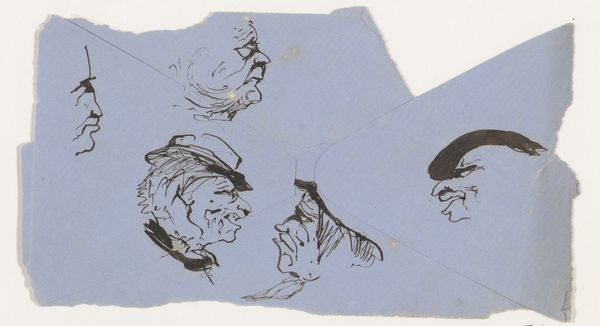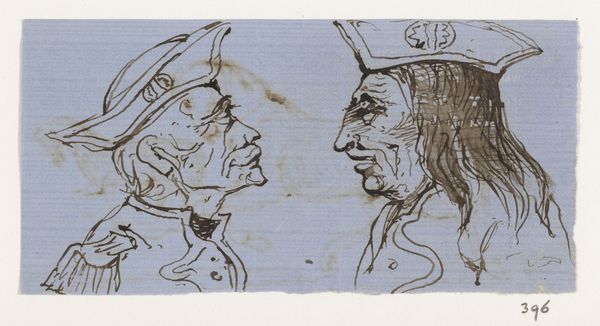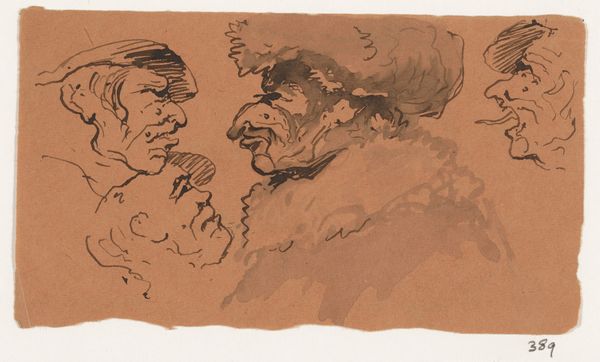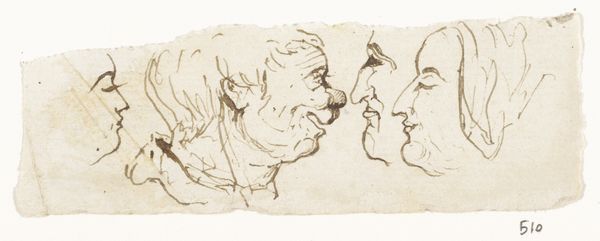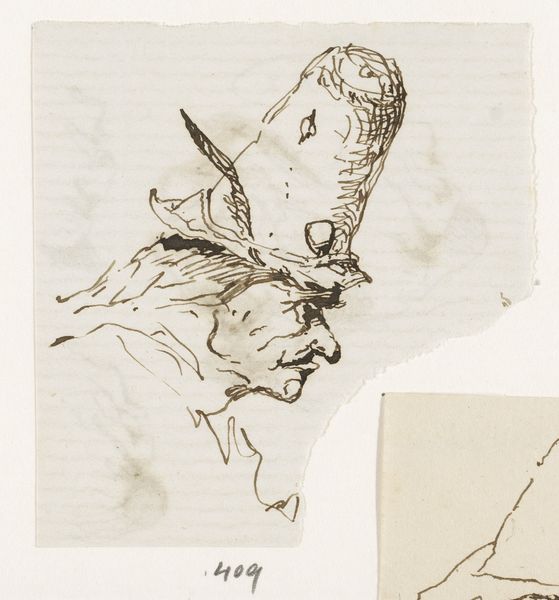
drawing, pencil, graphite
#
portrait
#
drawing
#
amateur sketch
#
light pencil work
#
quirky sketch
#
incomplete sketchy
#
figuration
#
personal sketchbook
#
idea generation sketch
#
character sketch
#
ink drawing experimentation
#
pencil
#
graphite
#
sketchbook drawing
#
realism
#
initial sketch
Dimensions: height 45 mm, width 92 mm
Copyright: Rijks Museum: Open Domain
Editor: This is "Kop", a graphite and pencil drawing by Johannes Tavenraat, made sometime between 1840 and 1880. It's currently housed at the Rijksmuseum. I'm struck by how informal it feels; almost like a quick character study from a sketchbook. What story do you think this drawing tells? Curator: I see a work that reflects the changing role of art institutions and art itself. By the mid-19th century, museums like the Rijksmuseum were becoming increasingly important in shaping national identity. At the same time, artistic training was becoming more formalized through the academy system. This drawing may represent the intersection of those spheres. Is it a formal commissioned portrait? Unlikely. It's far more akin to a private exercise, a study in realism perhaps made for personal use, not public display. Editor: That’s interesting! So, the drawing’s very existence in a public institution today almost contradicts its original purpose? Curator: Precisely. Its presence here allows us to examine evolving ideas about what constitutes 'art' and what deserves preservation and presentation to the public. The rise of Realism as an accepted genre legitimized depictions of everyday life and everyday people, but a loose sketch might still be considered a preliminary or non-precious object. How does this tension inform your perception of the piece? Editor: I guess it makes me think about how much value we place on intention versus outcome. Even an informal sketch can become culturally significant simply by ending up in a museum! Curator: And consider whose stories get told and whose are relegated to the margins. Even a sketch like this provides a glimpse into a life, albeit fleetingly. What have you learned? Editor: I’ve gained a deeper appreciation for how art’s meaning can shift over time and how institutions influence what we consider valuable. Thanks! Curator: My pleasure. Considering the politics of display certainly enriches our understanding.
Comments
No comments
Be the first to comment and join the conversation on the ultimate creative platform.
